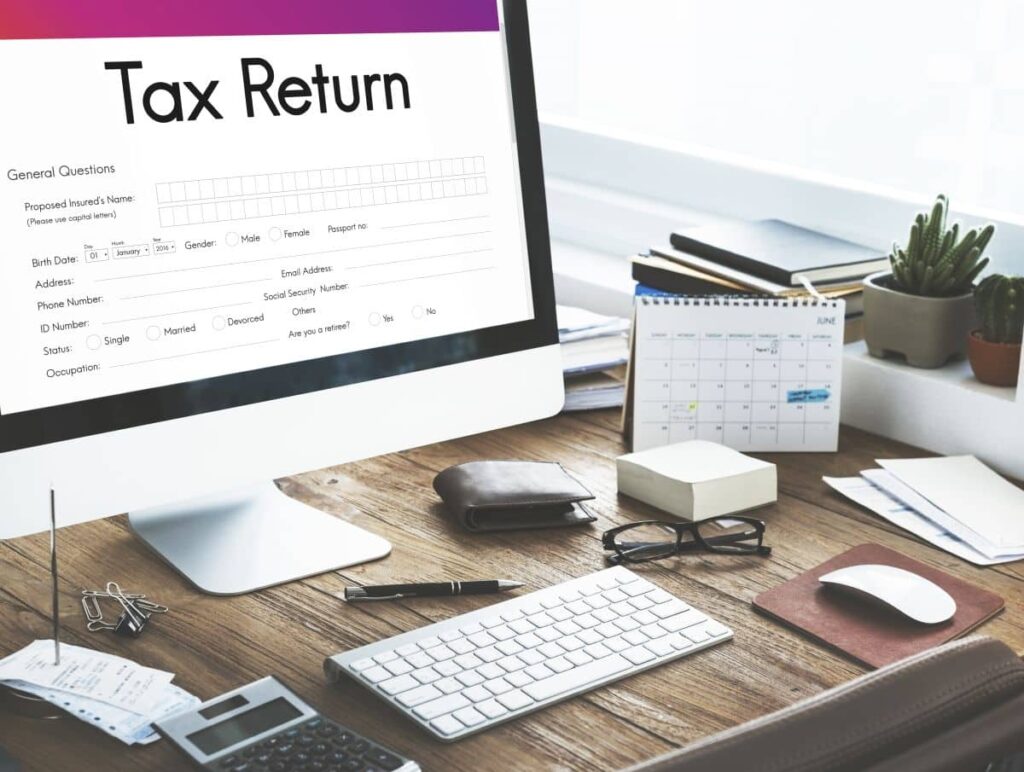One of the biggest challenges that small business owners face is figuring out how to reduce their overall tax bill. Of course, paying taxes is an unavoidable part of life, but the good news is there are many legitimate ways to save money and limit your tax liability when it comes time for filing.
In this blog post, we'll discuss some of these essential money-saving tips for small businesses in terms of tax deductions. We'll cover everything from taking advantage of home office deductions to which meals and entertainment costs you can write off while still staying compliant with federal tax law.
So whether you're a new entrepreneur or simply find yourself needing a refresher on legal deduction processes, read on—we've got plenty of helpful information guaranteed to keep more money in your pocket!
Let's get started!
What Is A Tax Deduction?
In spite of the fact that the words "tax" and "deduction" are both included in its name, a tax deduction is not cash that is subtracted from the taxes you owe and which you are then allowed to keep. A tax deduction, on the other hand, reduces the amount of taxable income you must pay taxes on, ultimately resulting in a lower effective tax rate and less tax overall.
After considering all of the relevant tax regulations, your effective tax rate is the typical taxation rate applied to your income.
You are allowed to claim specific company expenses (or parts of costs) as tax deductions by the Australian Taxation Office (ATO). This does NOT indicate that you will get this amount back as a tax refund; rather, it indicates that you will NOT have to pay tax on the cost that you are claiming.
How Much Tax Does a Small Business Pay in Australia?
The question of how much tax should be paid on income by small enterprises in Australia is a difficult one. When it comes to paying taxes, it's really no wonder that owners of small businesses want to pull their hair out because of all the different criteria, tax rates, and quarterly payments they have to deal with.
While it is normally recommended that you engage with an experienced business accountant to assist you with the filing of your firm's taxes, the following discussion will cover some of the fundamentals of small company tax in Australia.
When it comes to calculating the taxes for your firm, the following are some of the terms you have to be familiar with:
After making any necessary deductions and taking advantage of available tax breaks, you will be subject to income tax.
The term "capital gains tax" refers to the type of tax that must be paid on any corporate assets that have been sold for a profit in the preceding year.
Although the client is theoretically responsible for paying the goods and services tax on your products and services, this tax is still your duty.
The tax that some companies must pay on the wages and salaries that they have given to their employees is known as payroll tax.
There are going to be a lot of smaller companies in Australia that will only have to pay some of these taxes every single quarter or every single year. Despite this, it is highly possible that you will encounter them at some point, and it is important that you have a fundamental grasp of them.
How Much Tax Does A Business Pay On Profits?
The tax rates for Australian companies are 26% and 30%, but the tax rate for the GST is only 10%. This is because your payroll tax rate will be determined by both the total amount you're spending on taxable wages and the state or territory in which you reside.
- If your business has an aggregated income that is lower than the threshold amount AND your passive income is lower than 80 per cent of your total accessible income, then you will be subject to the 26 per cent small company tax that is levied throughout Australia.
- If your business generates more than the threshold for aggregate income and your passive income makes up more than 80 per cent of your total accessible income, then you will be subject to the tax rate of 30 per cent.
- If you operate your business as a sole proprietor, you won't have to pay any taxes on the first $18,200 of your income. However, as a sole proprietor, you are responsible for filing and paying income taxes as part of your individual tax return.
- Because of the threshold nature of these taxes, it is possible that you will not be required to pay payroll tax if you don't have a large number of employees.
If the annual revenue of your business is greater than $75,000, you are required to register for the GST. The Goods and Services Tax (GST) mandates that a levy of 10% of your taxable goods and services be paid.
This levy is then added to the price of your items, which the customer is responsible for paying. But, as it is your obligation to pay that tax to the ATO, you are required to save the GST that you charge in order to use it for the appropriate reason.
After you have been approved for GST registration, you will be required to provide a Business Activity Statement on a quarterly basis. When you make these quarterly reports, you'll be responsible for paying the taxes that pertain to your company.
Take into account that the tax rate that applies to small businesses fluctuates on an annual basis. Make it a habit to check in with your accountant if you have questions regarding your financial commitments regarding taxes.

What Kind Of Tax Do I Have To Pay On An ABN?
Whether you hold an ABN for your business as a sole proprietor or for your company determines how much tax you will be required to pay on that number. To reiterate, sole proprietors are exempt from paying tax on the first $18,200 of income they generate, whereas firms are required to pay tax on all of their earnings.
In addition, corporate taxes for sole proprietorships are typically included in the individual tax return of the business owner. Nevertheless, if your ABN is listed as a business, you will be required to file a separate tax return on the company's behalf.
Your profits, costs, capital gains, staff wages, and the state or territory in which your business is established all play a role in determining the amount of tax that you will be required to pay.
You are not the only one who, at this point, may still feel bewildered and slightly overwhelmed by the situation. However, even in the best of circumstances, business taxes are a pain in the neck, so you shouldn't be concerned if you don't have expert-level knowledge of the various complex rates and possibilities.
Maintain proper records of your revenues and expenses, and consult with an accountant for your company to ensure that you are paying the amount of taxation to which you are legally obligated. You'll get the hang of it when some time has passed.
Trust Distributions
Trusts are still commonly used legal structures in Australia for the purpose of conducting business or owning equity in a company. Therefore, if the structure of your company includes a trust, it is absolutely necessary for you to draught a trustee decision to transfer revenue to beneficiaries no later than June 30 in 2023 (or earlier as required by the Trust Deed).
Provide yourself plenty of time to meet with your tax expert well before the end of the year. This will ensure that the resolution can be set with tax-effective factors in mind and that it can also be recorded before the end of the year. In addition, auditing procedures conducted by the ATO typically focus on verifying the accuracy of trustee minutes.
Variation Of PAYG Instalments
An evaluation of your tax position up to this point in the year will determine whether or not it is feasible to lower the amount of your quarterly PAYG instalments for March 2023 and June 2023. Rather than delaying the improvement of your cash flow until you file your income tax return and receive a refund, this can greatly boost your cash flow right away.
Bad debts
If you want to be eligible for a deduction, you need to make sure that any unpaid obligations are forgiven before June 30, 2023. In addition to this, minutes should be drafted in order to document the write-off properly.
Non-Commercial Losses
The non-commercial loss provisions legislation prohibits an individual from balancing a loss from a company's operations against other income received throughout the tax year unless one of the following four requirements is satisfied:
1. Assessable income test
The activity in question must have generated an assessable income of at least $20,000 for the year in question.
2. Profits test
It is necessary for the undertaking to have generated a profit in at least three of the five most recent years of income, including the current year.
3. Real property test
It is required that the aggregate lower price bases of any real property or interests in real property that are utilised on an ongoing basis in the operation of the activity amount to at least $500,000.
4. Other assets test
At least one hundred thousand dollars must be represented by the aggregate value of all other assets (excluding motor vehicles) that are utilised on an ongoing basis in operation.
Suppose your total assessable income from other resources that are not tied to that specific company operation is less than $40,000, minus any net capital gains. In that case, you may qualify for an exemption under the primary production and professional arts business categories.
Generally speaking, people who have an adjusted taxable income of $250,000 or more will not be permitted to deduct losses from non-commercial operations against other income. This is because the threshold for this prohibition is established at a higher amount.
On the other hand, if there are exceptional conditions, you might be able to submit a request to the Commissioner asking him to exercise his discretion and let you claim the loss.
Small Business Capital Gains Tax (CGT) Concessions
When certain fundamental requirements are met, a potential reduction in the amount of a capital gain realised from the sale of an active asset that has been employed in the operation of a business can be applied.
In order to pass one of the entry tests, you have to either qualify as a CGT small business entity (have an annual turnover of less than $2 million) or fulfil the highest net asset value test (have an annual turnover of less than $6 million). Both of these requirements must be met. Among the concessions are the following:
- Small business 15-year exemption.
- Small businesses 50% reduction.
- Small business retirement exemption.
- Small business rollover.
These concessions may be of great value to business owners who are considering selling their companies or otherwise restructuring their operations.
However, when they are implemented in a firm that is run through a structure that involves many entities, the concessions can be especially challenging to apply because of the complexity of the structure properly.
Before getting into a contract to sell a company or another asset owned by a business, you should talk to your tax adviser about whether or not you are eligible to take advantage of these reductions.
Small Business Income Tax Offset

You might well be qualified to make a claim for a small company income tax offset of up to $1,000 if you are an individual who owns and operates a small company as an individual or has a share of nett small business income from a partnership or trust and your business has an aggregated turnover of less than $5 million.
To begin, you will need to calculate the percentage of your total net small company revenue for the year that is above and beyond your taxable income for the year, which will then be multiplied by your income tax liability for the year. After then, the offset is determined by taking sixteen per cent of this total sum, up to a maximum of one thousand dollars.
Loss Carry Back Tax Offset
If a corporation meets the requirements, it may be able to "carry back" a tax loss it incurs during any of the years between 2020 and 2023 and use that loss to offset a tax due from an earlier year that falls within the time period of 2019 to 2022.
The amount of the tax offset is determined as the amount of the tax loss for the applicable year multiplied by the firm's tax rate for the year in which the loss was incurred. This is done after subtracting any unapplied exempt income for that year.
The tax offset can only be as much as the amount of money left in the firm's franking account at the end of the year in which the offset is being claimed. Moreover, the tax offset can only be as large as the total tax the company was paying in the years in question.
While not comprehensive, this list of tax planning strategies should provide you with a general understanding of the variety of tax breaks that may be open to your company.
Next, talk to your financial planner or get in contact with a tax specialist to examine the different ways in which you may be capable of reducing the amount of money that will be owed in taxes so that you can increase your chances of making the most of these possibilities for financial planning.
Factors That Are Crucial To Keep in Mind
1. As much as you can, benefit from the Temporary Full Expenses (TFE) incentive
Did you know that if you are eligible for the TFE incentive that the federal government provides, you may be able to claim an immediate tax deduction for the complete cost of any depreciating assets that you have just purchased?
The Temporary Full Expenses (TFE) incentive is available for qualified assets that are acquired, installed, and ready for use between 7:30 p.m. on October 6, 2020 and 6:30 p.m. on June 30, 2023. This incentive is available for qualified assets. If you purchased the item before October 6, you may still be eligible for a tax benefit under the older version of the Instant Asset Write-Off plan. This is the case if you acquired the item before that date. Only those people who bought their asset before October 6 are eligible for this deduction.
Rather than claiming a tax deduction over the life of the asset, which may be a number of years, this might aid your cash flow by reducing the amount of tax you owe in the initial year you acquire and use the item. This can be a significant benefit.
This is done rather than deducting the cost of the asset over its entire useful life. Have a discussion with your accountant to determine whether or not you are eligible for this programme and whether or not it is suitable for the specifics of your situation.
2. Keep records
In order to support any claim that you make in your business tax return, you are required to keep documents.
Invoices for taxes, plane tickets, company credit card reports, business automobile leasing reports, and even business bank account fees are all examples of the kind of records that fall under this category.
Maintaining your documents in an orderly fashion and putting them away in a safe place will ensure that you are not caught off guard when the time comes to pull them out.
3. Consult with those who specialise in running small businesses
It is in your best interest to seek the assistance of an experienced tax accountant when it comes to a task as complicated as filing the tax return for your company.
This person will be able to guide you through the process of claiming the appropriate expenses and extracting the maximum amount possible from your refund.
When it comes to a task as complicated as filing a tax return for your company, it is in your best interest to seek the assistance of an experienced tax accountant.
One Last Thought: Tax Avoidance in Contrast to Efficient Taxation
It is not about avoiding taxes in any way
It is prudent to understand that the fact that you are paying taxes indicates that you are producing cash. Furthermore, the payment of taxes gives the funds necessary for the government to maintain the country's functioning (regardless of whether or not we support the methods...).
To be perfectly clear, this is not a strategy post in which you will learn how to make one million dollars while paying no taxes at all. However, even if there are "tax planning" schemes and promoters who are completely unethical, there are very clear ways in which you may plan for taxes and make the most of what is accessible in order to lower the amount of tax that you pay.
It comes down to the efficiency of the tax system
Through the years, we've witnessed a great number of people build their companies to the point where they now owe tens of thousands, if not hundreds of thousands, of dollars in annual taxes. However, as we said earlier, this has the potential to be a very positive thing (given that they are making a significant amount of money!), provided that we have prepared very thoroughly to avoid paying excessive tax levels.
Frequently Asked Questions
- The money must have been spent by you and not have been reimbursed by your employer;
- The expense must directly relate to earning of income; and.
- You must be able to prove the expense by having a record such as a receipt.
Records are written evidence of your income or expenses, these can be either paper or electronic. You need to keep records that support the claims you make in your tax return. For most expenses you need a receipt or similar document from the supplier.



